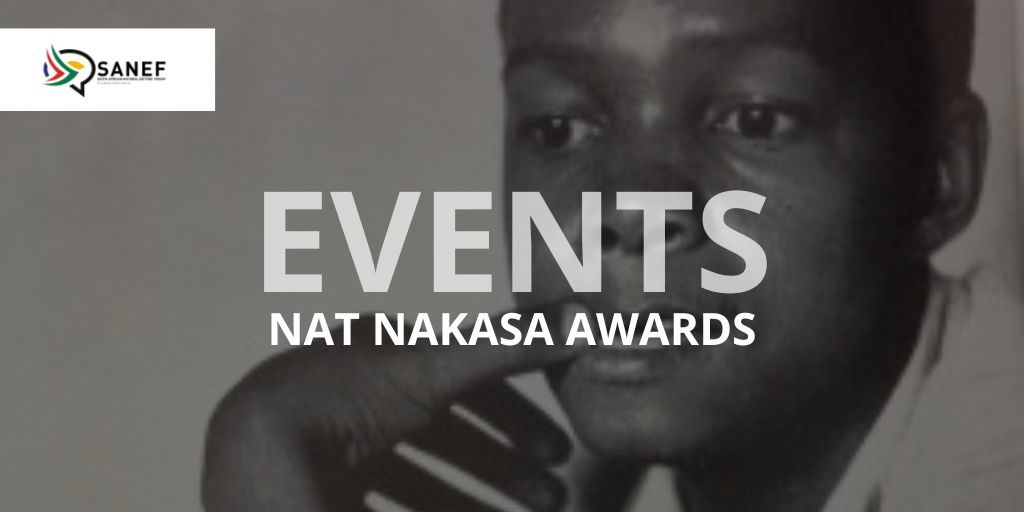Who Was Nat Nakasa
The native behind journalistic courage and integrity
Nat Nakasa was a South Africa journalist who died in exile at the age of 28 after a brief but dynamic career characterised by his journalistic courage and integrity. In 1964 Nakasa left South Africa for the US to take up a Nieman Fellowship at Harvard University. In doing so, he relinquished his South African citizenship. After moving to New York the following year, he suffered increasing homesickness and isolation, which contributed to his suicide on July 14 1965.
If Nakasa were alive today in the new South Africa, perhaps he would have been a diplomat or politician, perhaps a prominent editor or a major publisher. One thing is certain – whatever lofty post we could dream up for him now, one thing he would remain … a writer.
“I must tread softly. This is time-bomb ground – the world of Nathaniel Nakasa. The man who, with a subtle humour in the mind, and a sharp bitterness in the heart, set out and attempted to create order out of the disorder of the South African white prejudice and racism and that other thing, South African black timidity and subservience.” Strong words from poet Mongane Serote as quoted from The World of Nat Nakasa (Raven books). But, then, pussy-footing around the truth was never Nakasa’s style.
Born Nathaniel Ndazana Nakasa in 1937, he spent the major part of his adult life as a journalist in Johannesburg, a regular contributor to the Golden City Post, an assistant editor of Drum and later as the first black columnist on the Rand Daily Mail. At the height of his career, in 1963, he founded a literary tell-it-like-it-is journal called The Classic. Nakasa’s personal style gained a substantial following, although his middle-of-the-road views in a divided South Africa were often a little too liberal for some of his fellow black journalists.
The 1960s were dark days for black South African journalists when repressive apartheid laws stifled a decent day’s work, never mind any glimmer of creativity. For many, the only way was exile to foreign lands, far away from the oppression and humiliation that was home. As Essop Patel says in the introduction to The World of Nat Nakasa, “The creative output of the Sophiatown Renaissance came to an end as the bulldozers rolled in.”
But out of the rubble emerged a new kind of black journalist elite and for the young and ambitious Nakasa, fresh in Johannesburg from Durban, these were the formative years.
Drum journalist Can Themba remembers Nakasa in the early days of his career. In a tribute to Nakasa titled “The Boy with the Tennis Racket” Themba recalls, “He had a puckish, boyish face, and a name something like Nathaniel Nakasa. We soon made him Nat.”
Nakasa was different from the start. Said Themba, “He came, I remember, in the morning with a suitcase and a tennis racket – ye gods, a tennis racket! We stared at him. The chaps on Drum at that time had fancied themselves to be poised on a dramatic, implacable kind of life. Journalism was still new to most of us and we saw it in the light of the heroics of Henry Nxumalo, decidedly not in the light of tennis, which we classed with draughts.”
Many recall Nakasa and good friend Lewis Nkosi being bookish and serious – not the carousing, drinking shebeen aficionados the rest of the Drum team was notorious for in those days. Those were heady days for Nakasa and his black colleagues, a group of maverick journalists charting new territories without any real role models to look up to. Although times were bitter, for Nakasa it was all about crossing boundaries: “There must be humans on the other side of the fence; it’s only we haven’t learned how to talk,” he said.
Says Patel, “Nat Nakasa focused his attention upon the idea of common experience. He desired a truly South African nation.”
In a piece titled “It’s difficult to decide my identity”, he wrote, “My people are South Africans. Mine is the history of the Great Trek. Gandhi’s passive resistance in Johannesburg, the wars of Cetewayo and the dawn raids which gave us the treason trials of 1956. All these are South African things. They are part of me.”
Wally Serote stated in an interview last year, “To quote Tutu … Nat Nakasa was a rainbow man. Before the rainbow was allowed.” His column in the Rand Daily Mail saw him hopping the colour bar and having a voice on the other side of the fence. In “Between Two Worlds” he wrote, “Some people call it ‘crossing the colour line’. You may call it jumping the line or wiping it clean off. Whatever you please. Those who live on the fringe have no special labels. They see it simply as LIVING.”
In 1963, he saw the way clear to put out his own literary contribution in the form of The Classic. The magazine’s main objective was to encourage “…those writers with causes to fight for, committed men and women who look at human situations and see tragedy and love, bigotry and common sense for what they are”. Good friend and author Nadine Gordimer says of those days, “Nat’s approach to The Classic was serious and yet light-handed, gay; candid and unflustered. He was a clever young newspaperman but had no literary background or experience – yes. There was not enough money for the venture and there were endless practical difficulties – yes. Nevertheless, he felt that day-to-day journalism floated, like oil indicating the presence of a submarine, on the surface of African life, and he wanted to make soundings of his own. He asked for help, and what’s more, he did so aware that help more often than not must take the form of criticism, and in the self-knowledge that he could take that, too.”
Certainly, conditions were not improving in South Africa and while Nakasa’s career was gaining ground despite a system that dictated the opposite, the global village was calling with the voice of freedom. In 1964, Nakasa was awarded the Nieman Fellowship to read journalism at the University of Harvard. Of course, obtaining a passport from the government of the day would take nothing short of a miracle, leaving Nakasa in an impossible situation. As he said in a well-known piece titled, “A Native of Nowhere”, “Sometime next week, with my exit permit in my bag, I shall cross the borders of the Republic and immediately part company with my South African citizenship. I shall be doing what some of my friends have called, ‘taking a grave step’.”
Little did friends and relatives know just how grave that step would be, and how moving away from the land of his birth would affect the psyche of this sensitive writer. Says Gordimer of this emotionally traumatic time for Nakasa: “It was a strange time, the last year in South Africa; on the one hand, he was making a name for himself in a small but special way that no African had done before, his opinions and ideas were being considered seriously by white newspaper-readers whose dialogue across the colour line had never exceeded the command, do-this-or-that, and the response, yes-baas. On the other hand, he had been awarded a scholarship to Harvard and was involved in the process of trying to get a passport – for an African, a year-long game in which the sporting element seems to be that the applicant is never told what you have to do to win, or what it was he did that made him lose.”
Eventually, Nakasa “gained his freedom” in the form of an exit permit, and although missing his first flight out of the country, safely made it into the US. He was not crazy about New York and quickly moved on to Cambridge, where life at Harvard was spent “steeped in the somber business of education”.
Although the Harvard year was good on the learning front, things went downhill from there. Nakasa grew increasingly homesick, isolated and unhappy, although this was not largely apparent to those around him. Says Patel of his death at the age of 28, “Nat Nakasa’s death by suicide on 14 July 1965 was an apartheid tragedy, and a tragedy of exile. After his year at Harvard, he wrote extensively for several newspapers and magazines in the United States. He appeared in the television film The Fruit of Fear, a critique of apartheid, and was to have written a biography of Miriam Makeba. But two days before his death he told a friend, ‘I can’t laugh any more and when I can’t laugh I can’t write’.”
Nakasa was buried at the Ferncliff cemetery outside New York, not far from the grave of Malcolm X, far from the country he knew and loved so well. Nadine Gordimer sums up Nakasa’s contribution beautifully in The World of Nat Nakasa, “The truth is that he was a new kind of man in South Africa, he accepted without question and with easy dignity and natural pride his Africanness, and he took equally for granted that his identity as a man among men, a human among fellow humans, could not be legislated out of existence, even by all the apartheid laws in the statute book, or all the racial prejudice in this country. He did not calculate the population as sixteen millions or four millions, but as twenty. He belonged not between two worlds, but to both. And in him, one could see the hope of one world. He has left that hope behind; there will be others to take it up.”
References: The World of Nat Nakasa, edited by Essop Patel (Raven Press). Nat Nakasa, Native of Nowhere (Times Media Productions).




